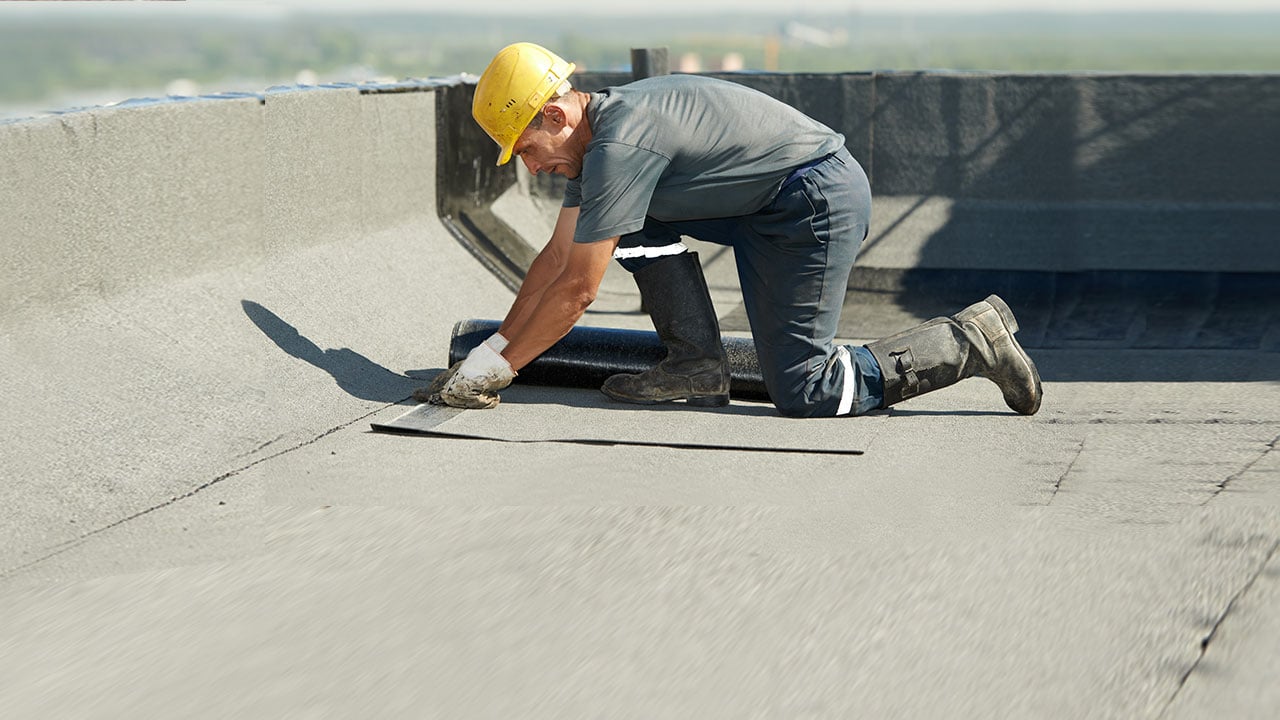Very few roofs end up lasting for their projected lifespan. Any issue that arises during the installation of a roof will inevitably become magnified over time as sunlight, rain, snow, hail, and debris do their work. Ironically, even the process of inspecting a roof can in some ways bring about its early demise. Here are just a few of the biggest challenges that a commercial roof may face over its lifespan.
Poor Installation
A sub-par roofing installation is one that uses lower-grade materials and/or incorrect installation methods. Your goal as the owner of a commercial roof is to prevent this from the outset – getting it right the first time is significantly less expensive than fixing a contractor error.
Installation errors can be the result of contractors misinterpreting a poorly-annotated design. They can also result from contractors who like to take shortcuts. Your best decision in either case is to hire a roofing consultant who can ride herd on both your contractors and your architect.
Issues with Flashing
Flashing is one of the most important parts of a roof, and yet flashing installation is a technical challenge that can be difficult for contractors to implement. Flashing is supposed to cover seams and penetrations in the roofing surface and channel water away from those areas. Flashing degrades over time, however. Either thermal expansion removes the material, or minor defects and penetrations turn into major issues. Assuming that the flashing was correctly installed in the first place, only regular inspection of these areas can ensure that they don’t turn into trouble spots.
Ponding Water
Any water on a commercial roof that doesn’t drain away or evaporate after 48 hours is considered to be “ponded.” Ponding is most often the result of a poor roof installation – if the roof isn’t appropriately pitched or if there’s no drainage, water will settle. Even staying in contact with water will damage your roof membrane – it will seep into cracks, exacerbate thermal expansion, and cause structural elements to rot. Catch ponding by conducting regular roof inspections and mitigate it by installing an improved roof-drainage system alongside a ponding-resistant membrane.
Penetrations Post-Installation
Your roof membrane is only designed to stop water. It can be very sensitive to other impacts – falling debris, hail or ice, or even foot traffic can damage your membrane and make enough of a hole for water to start seeping in. In other words, if you fail to correctly maintain your roofing membrane, you could end up damaging it more, resulting in a much higher repair cost than simply paying to maintain it. We’ll talk about remediating this at the end of the article.
Leaks
Nearly any of the elements above could cause your commercial roof to leak. A penetrated roof membrane, degraded flashing, improper installation, or ponding water can all cause your roof to leak. Concordantly, leak prevention requires the building owner or facility manager to inspect every element of the roof – particularly the roofing membrane, any areas where the membrane terminates, any area where flashing should be protected by sealant, and any major penetration in the roof (such as vents and skylights). Although this is a continuous process, facility managers may ease their burden by prioritizing older areas of the roof and areas that may be in poorer condition.
Roof Uplift
When wind passes over the roof of your commercial building, it creates a pressure differential – an area of low pressure outside your building, and an area of high pressure inside it. If that differential becomes too pronounced, it can literally lift the roof off your building. Preparing for uplift means paying careful attention to wind maps that govern the amount of uplift force your building must resist.
Improper Maintenance
Good maintenance is preventative – not reactive. The best time to repair a roof is before it breaks. We recommend dividing the roof into a series of manageable sections, and then inspecting each section in detail on a rotating basis while prioritizing the oldest segments.
During inspection it is important for workers to spend as little time as possible in contact with the actual roof. Foot traffic crushes insulation panels and damages roofing membranes – creating more problems than maintenance can solve. That’s where custom roof access walkways can help. Facility managers can enhance worker safety while painlessly increasing the operational lifespan of their commercial roofs.




